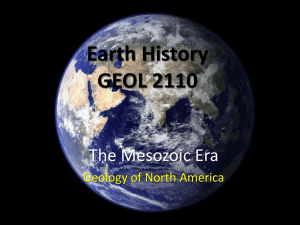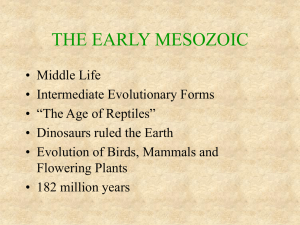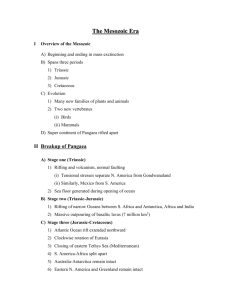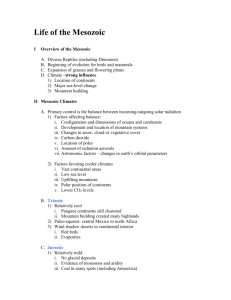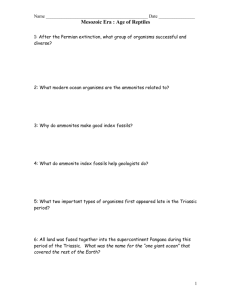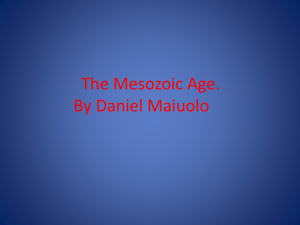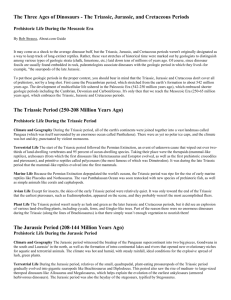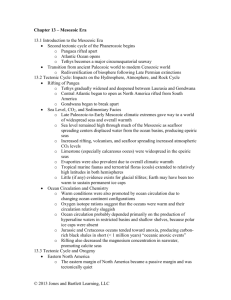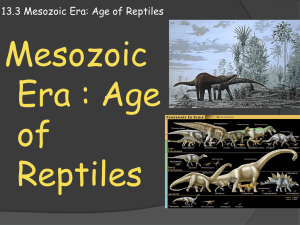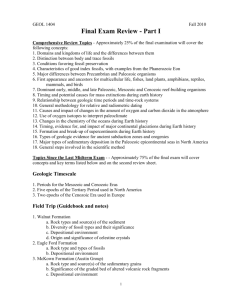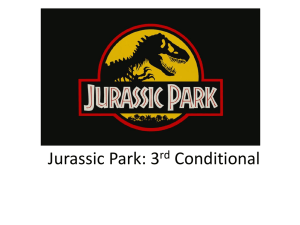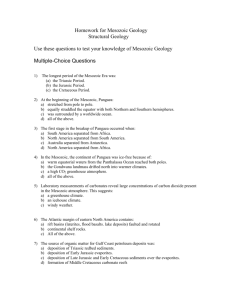Paleo-environments
advertisement
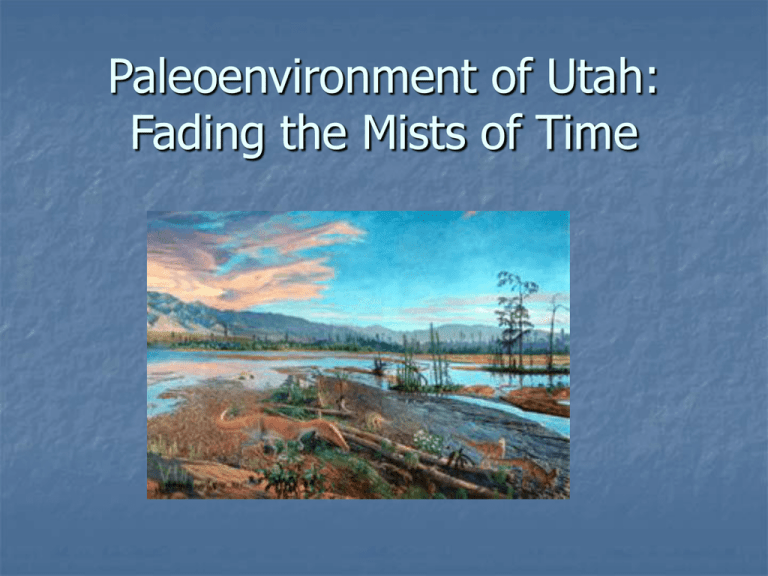
Paleoenvironment of Utah: Fading the Mists of Time Late Permian Pangea Supercontinent Laurasia and Gondwanaland Tethys Sea Cutler and Kaibab Limestone NA Southwest Permo-Triassic Extinction Most devasting mass extinction – 90-95% of marine species died out 75% of vertebrate families went extinct, synapsids heavily hit Casualites: Trilobites, Tabulate and Rugose Corals, Pareiasaurs, Cordaites Causes: Many! Severe climatic fluctuations, Siberian traps, Oceanic Overturn Seen at Capital Reef NP Triassic Pangea begins to break up Adaptive radiation of flora and fauna Archosauromorphs become dominant vertebrates Utah = 5-10 degrees North of the Equator NA Southwest Triassic Early (240 Ma): Moenkopi Shinarump Conglomerate Late (215 Ma): Chinle Upper Triassic Triassic Paleoclimate Globally warmer by 6˚C, with little latitudinal variation No polar ice caps Climatic Shift from warm and moist to hot and dry Large landmass = interior continental desert with high seasonality Utah: semiarid to subhumid climate Paleosols of Moenkopi record MAP 300-400mm and MAT 13-23˚C desert shrub or dry woodlands Paleosols of Lower Chinle record MAP 700-900mm, but up to 1400mm and MAT 18˚C open forest (Petrified Forest) Paleosols of Upper Chinle record MAP 400-600mm and MAT 29˚C desert shrub or dry woodlands Triassic Flora and Fauna Massospondylus Cycad Ceolophysis Flora: seed ferns, cycads, conifers Fauna: Archosauria: Dinosaurs! Climatic warming mirrored in floral and faunal turnovers Jurassic Pangea breaks up into North America, Eurasia, and Gondwana as the North Atlantic Sea opens Tethys Sea closed Spread of Dinosaurs NA Southwest Jurassic Navajo Sandstone Widespread Coastal Dunes Great Navajo “sand sea” spreads across interior of Western North America. Epicontinental seaway present = Some shallow marine excursions Late Jurassic uplift to the West causes stream direction to reverse, expanding deposition of dinosaur fossil-bearing Morrison Fm Namibian Desert, SW Africa Jurassic Paleoclimate Globally warm and moist climate, prevailing up to the polar regions Southwestern North America: Arid Coastal Desert Thicknesses of annual depositional cycles within the Navajo Sandstone indicate strong near-equatorial, north-westerly winds Mountains to the West enhanced wind strength, and cast a rain shadow, allowing active dunes to extend very close to the palaeoequator. Jurassic Flora and Fauna Conifers: most diverse, majority of tall trees Cycads, tree ferns and gingkos Age of Dinosaurs Pterosaurs First mammals Gingko Morganucodon Cretaceous Break-up of Pangea into present day continents complete Dinosaurs continue terrestrial dominance Radiation of Angiosperms NA Southwest Cretaceous Mancos Shale Marine shale, overlain by shallow marine sandstones and fluvial deposits. The Western Interior is the site of an encroaching epicontinental seaway from the north. Mountain building orogenies to the West Cretaceous Paleoclimate Globally warm and moist climate – Tropics 9-12˚C warmer than today, Deep Ocean 15-20˚ warmer than today Increased Sea level = Epiconinental Seaways Extensive tropical ocean stabilized global climate, gentle temperature laditudinal gradient Weaker global winds Cretaceous Flora and Fauna Angiosperms diversify, dominant Late Cretaceous – coevolution with insects Age of Dinosaurs Birds
